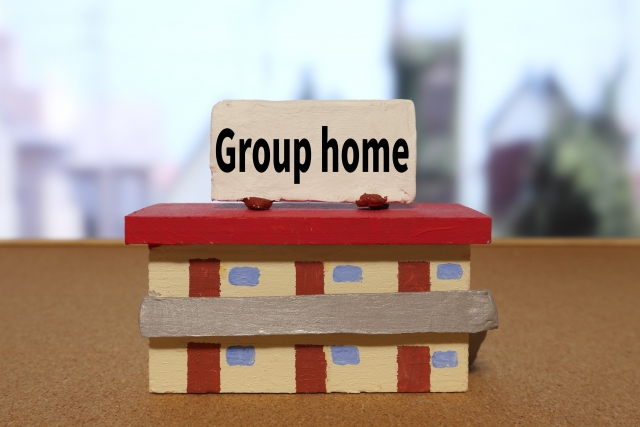Abuse of disabled people in group homes

Abuse of people with disabilities is more common in group homes than in support facilities for people with disabilities.
It can be said that in the past, it was simply hidden due to the system that requires reporting abuse.
Even so, some people may find it strange that group homes are the most common.
But I think there is more domestic abuse than in group homes.
The smaller the scale of life, the more stress there is.
There is no escape.
There will be no third party to monitor and take precautions.
It is more likely to occur in small groups, whether it is a couple or a parent and child, and it will not stop.
Group homes generally have 9 people per unit.
This is based on the idea that a small number of people, even just one person, can provide more attentive, home-like care than a unit of 10 people in a nursing home, but there is another problem as well.
Nursing care is difficult because it involves human relationships.
Even in elementary schools, where classes have changed from 50 students to 25 students, I think bullying has actually increased.
A large team allows you to avoid people you don’t like and make friends with like-minded students.
I think it’s the same for all organizations.
I am worried that the management of nursing care facilities is at risk of collapse in the future, and the same is true for daycare centers.
When it comes to closures due to financial difficulties, it may be faster than nursing homes.
The official price for childcare is highest for children under 3 years old, and goes down for children over 3 years old.
As the number of children decreases, if the number of high-priced 0-year-olds stops coming in, they will become a source of income.
The nursery school ends up in the red.
That’s why we don’t want to accept children over 3 years old.
There is a mismatch between demand and supply.
I want you to think about it.
In elementary schools, the official price paid to schools is unlikely to be different for 1st and 2nd graders, 3rd and 4th graders, and 5th and 6th graders.
If that were the case, the elementary school that runs the school would not be satisfied with it.
The administrative theory is plausible, but it is difficult to say that we fully understand the private sector.
The fundamental mistake is that the government believes that it can efficiently manage costs down to the smallest detail.
A socialist economy is necessary to some extent for medical welfare education, but looking at the current situation, it would be wiser to leave things in the hands of God with a free economy.
However, this is because the people are always blaming politics and administration, and in the end it is the people’s fault.
However, it is also pathetic for politicians to be pandering to the voices of some citizens.
The government, which is supposed to correct politicians, is also lacking in power.
It’s all the people’s fault.
But if you don’t think about it, the recent political scandals will be pathetic and disgusting.
Gasoline prices are also subsidized, so dealers don’t compete and prices don’t go down.
Once supply is increased or prices rise, users will naturally reduce their use of gasoline.
If we want to lower medical costs, it would be more effective to increase the capacity of medical schools and increase the number of doctors.
Unless the supply of doctors is met, physician salaries will remain high and medical costs will not fall.
If medical costs rise, patients will likely limit their visits to the necessary minimum.
It is difficult and full of contradictions to keep the unit cost of medical treatment low so as to reduce the burden on the people, and to ensure that medical workers are treated well.
It is much more difficult to adjust high and low prices through national authority.
Medical expenses, gas prices, etc.
No one is bad though.
We need more intelligent politicians and more hands-on officials in our country.
Is this more difficult?
Pulse oximeter 95/97/97
Body temperature 36.6 Blood sugar 163
Glasswork policy and wooden structure policy
CEO Yasunari Koyama
